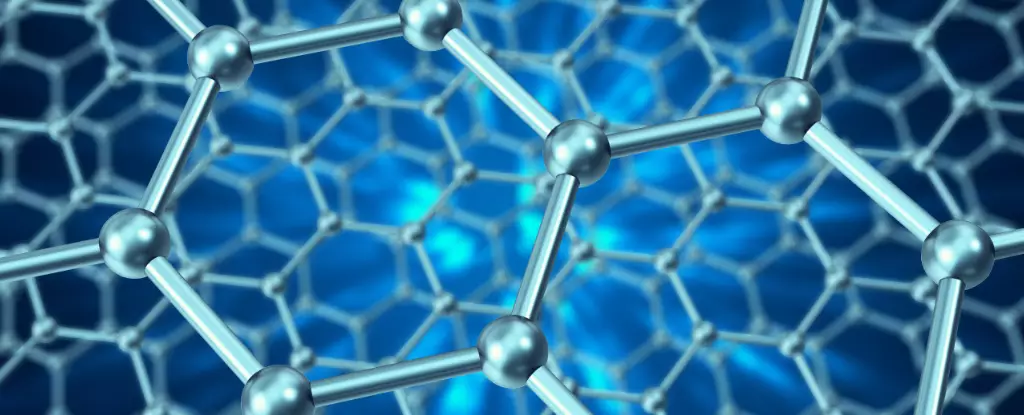The discovery of unconventional states of matter often represents a breakthrough moment in condensed matter physics. The recent collaborative research involving institutions like the University of British Columbia, the University of Washington, Johns Hopkins University, and Japan’s National Institute for Materials Science highlights a fascinating realm achieved through the unique arrangement of carbon atoms in twisted graphene layers. This pioneering examination sheds light on electron behavior under unusual conditions, revealing potential applications across quantum computing and superconductivity.
Graphene, recognized for its remarkable electrical, mechanical, and thermal properties, is fundamentally composed of carbon atoms arranged in a hexagonal lattice. This structure allows electrons to move freely, akin to agile dancers in a continuous symphony. The study led by physicist Joshua Folk encourages a deeper understanding of this material’s intricacies. Essentially, graphene’s unique atomic arrangement results in behavior that remains surprisingly analogous to more traditional electrical conductors, such as copper. Nonetheless, the inherent peculiarities of graphene make it an enticing prospect for cutting-edge research.
At the crux of this research lies the manipulation of graphene layers, which can create moiré patterns—a phenomenon that occurs when overlapping grids produce new visual structures. By twisting these single-atom graphene sheets, researchers provoke intriguing electron behaviors that would not manifest in conventional materials. This process not only impacts the topology of the material but introduces unexpected properties, akin to discovering new rules in a previously known game. The resultant effects challenge the norms of electron conduction, making twisted graphene a significant focus for physicists seeking to unearth novel material behaviors.
One of the pivotal findings of this research is the transformation of electrons during this freezing process, evolving them from a fluid-like behavior into a more structured form. This state, referred to as a Wigner crystal, presents electrons in an ordered array without compromising their ability to conduct electricity—an aspect that defies conventional wisdom regarding crystalline structures. Indeed, the electrons trapped in this ordered arrangement can still flow along the material’s edges, giving rise to what the researchers describe as topological electronic characteristics.
The Quantum Hall Effect: A Playground for Exploration
As the research unfolds, it reveals incidents of the quantum Hall effect—an example of quantized resistance influenced by electromagnetic fields. This phenomenon presents unknown parameters that physicists can exploit to advance quantum computing. The topological nature of these new states offers potential avenues for the development of qubits, the fundamental units underlying quantum computation, adorned with enhanced stability compared to their traditional counterparts. Such technological advancements hinge on the peculiar behaviors observed in twisted graphene configurations.
The Potential of Geometry in Electron Dynamics
Emphasizing the relevance of geometrical factors, the researchers propose that manipulating the shapes in which graphene layers are contorted—much like forming a Möbius strip—could reveal new classes of electron quasiparticles. These quasiparticles could introduce increasingly complex interactions and quantum phenomena, enriching the scientific community’s understanding of matter at a fundamental level. Such innovative explorations not only deepen theoretical physics but also expand the implementation possibilities in quantum technologies.
As scientists continue to decode the peculiarities presented by twisted graphene, the potential ramifications stretch far beyond laboratory curiosities. They hint towards future breakthroughs in energy-efficient superconductivity and the adoption of quantum computing technologies. This exploration of electron behavior in novel states not only enriches our scientific understanding but could substantially reshape technological frontiers. The excitement around twisted graphene underscores the potential for discovering new, game-changing materials in an age where quantum technologies are rapidly advancing.

Leave a Reply